Unit One- Personal Choices
4. Lesson Four: Exercise Habits
|
|
Making physical activity an integral part of your day is important regardless of your age. Physical activity contributes to your physical well-being and helps to develop a healthy body, maintain weight, and reduce feelings of anxiety and depression. Your benefits will increase as you add activity to your day. And, physical activity is easy to do with many fun things to choose from. Read on to find out more.
Tuning up your body with physical activity helps you to:
- Build strong bones and strengthen muscles
- Maintain flexibility
- Achieve a healthy weight
- Promote good posture and balance
- Improve fitness
- Meet new friends
- Strengthen the heart
- Improve physical self-esteem
- Increase relaxation
- Promote health growth and development
- Look and feel your best by cranking up your activity level
Get Active Your Way Every Day - For Life!
It's Easier Than You Think!
You can do it - here's why
Did you know that 63% of Canadians - just like you - are not active enough to achieve the health benefits they need from physical activity?
Your body is designed to move and it's surprising how little time it takes to stay healthy and reduce the risk of disease if you are physically active, regularly.
Consider this: you're awake about 15-19 hours a day, but you only have to be active for ONE HOUR and that 60 minutes of activity doesn't have to be done all at once. You can add up your activities, 10 minutes at a time, to get that daily total. It's easy to take a first step and that counts as progress when you're getting started.
Add up your activities during the day in periods of at least 10 minutes each. Start slowly...and build up! If you are already doing some light activities, move up to more moderate ones. A little is good, but more is even better, if you want to achieve health benefits.
WORKING SMART-WORKING
OUT
Do you work out? Lots of people build physical activity into their day by
working out, purposefully setting aside time to exercise their bodies. And the
life of a student can be pretty sedentary, filled with activities that require
little physical energy, so building time for physical activity into your day is
really important.
What Exercise Can Do:
As well as the benefits to the muscular and cardiovascular systems, some
activities help strengthen bone. Running, walking, and skip ping are just a few
weight-bearing activities which require you to carry your body weight while you
move. Minerals are being deposited into the bones and their density in creases,
or more accurately does not decrease at the rate it would without this type of
activity.
What Exercise Can’t Do:
You cannot “spot reduce”, that is reduce an area of your body or get rid of one
area of excess fat stores. But exercise will tone muscles in specific areas,
and firm your body. And exercise does use energy.
A smart workout is an activity for which you have prepared yourself. If you
have not been very active for a while, a 10-km run (or any other in tense
activity) is the fastest way to damage your body and convince your self that
physical fitness is not for you. So begin by choosing a reason able activity.
If you want to be able to run 10 km, work your way up to it.
Choose an activity you like. You are more likely to repeat the experience if you enjoyed it. You can combine your activity time with an opportunity to visit friends. Many people jog, play tennis, walk, cycle, swim or play team sports because they have friends who like to do the same activity.
Choose an activity that fits into your budget, something you can afford. For example, downhill skiing involves a much greater expenditure than walking. If your only fit ness experience costs a great deal, you are likely to do it less. You may only go skiing once or twice a year but be able to walk every other day.
Choose a time of day that is best for you and try to focus that time on getting some exercise. Of course, there are times when you will need to shift your routine to meet the demands of your day. Be flexible about it when you have to be but remember that some people find it easier to fit physical activity into their lives when they have a set routine.
Exercise restraint when you exercise your body. Pushing yourself too hard or too fast can cause injury and lessen your desire to repeat the activity.There is no exercise or activity that is perfect for everyone.
Choose those that are good for you. You will be more likely to make them part of your lifestyle.
Warming Up
Begin a workout by doing a gradual warm-up. This prepares your body for the
strenuous activity to come. One of the best ways to warm-up is to do a less
strenuous version of the activity you are about to do. Swim a couple of gentle
laps, walk and then jog lightly in place, or stretch and bend before beginning
the activity you have chosen. This type of warm-up pre pares your body by
increasing your heart
rate and sending an increased blood flow to the muscles that will be working
out. Stop and stretch to complete the warm-up.
Remember to drink water before and after a workout as well as during a break. You may not feel thirsty but your body needs to replace the fluids lost during exercise. Also it is best to wait a couple of hours after a meal before starting a strenuous workout.
Begin your workout. If your focus is the cardiovascular system, you will perform son ask, such as running, aerobic ex e, cycling, skipping, or jogging to reach your target heart rate. Your goal may be 20 to 30 minutes of work at your target heart rate but in order to do this you may have to work up to that level. Start by doing a couple of minutes of strenuous work, slowing down for a working rest, and then increasing your heart rate again for a couple of minutes. Do this through your workout.
Over the next few workouts in crease the time of strenuous work and lessen the resting time.
Remember to check your pulse and say a few sentences. This will help you to determine the level of work you are doing. You should be able to speak, likely in small sentences and breathlessly, but so that you can be understood. If you are working so hard that you cannot speak, decrease your effort. Avoid the temptation to increase your workouts too quickly; a 10% increase each week is more than enough. Eventually you will reach your goal.
It is important to remember to breathe while you exercise. While this may sound strange, some people hold their breath while strenuously working. The body needs oxygen while exercising and holding one’s breath can cause damage.
Cooling Down
After you have finished the strenuous part of your workout, you need to do a
cool-down before you stop completely. Continue the activity you are doing but
at a slower pace for several minutes. These gentle repetitions will allow your
muscles to relax while circulating blood through them. This is a good time to
do a bit more stretching.
You should try to work out two to three times a week for 20 to 30 minutes each
time. This allows your muscles and cardiovascular system to develop
efficiently.
Adding Variety
If you find your present workout boring or would like to experiment with a new
activity, try cross-training. This means varying the activities you choose for
your workouts. A variety of activities also allows you to choose an activity
which fits into your schedule for the day rather than eliminating it. As, well,
if you choose different types of activities, you will work on different sets of
muscles and your overall fitness level will improve.
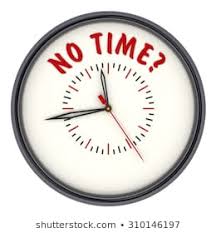 I don’t have time today.
I don’t have time today.Don’t try to cram physical activity into an already busy day. Take a relaxing walk before bed. Fit little activities, like walking up stairs, into your busy schedule. And make time for yourself tomorrow.
 I never have enough time.
I never have enough time.
If time is your regular excuse (and it is a commonly used reason for not
exercising) then it is time to make a new schedule for yourself. Just as you
wouldn’t go for a week without eating, neither should you miss out on regular
physical activity. Even an hour three days a week is a good start.
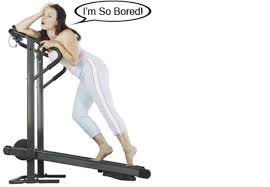 It’s boring.
It’s boring.
Then find a new activity. There are so many things you can do that you
shouldn’t get trapped into one routine. Vary what you do from day to day. Do
some activities with friends and some by yourself.
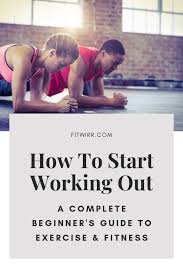 I don’t know how.
I don’t know how.
Find out from someone who knows. Your physical education teachers, community
class instructors, the YMCA and YWCA, and other trained activity leaders can
help you. Now is the time to learn.
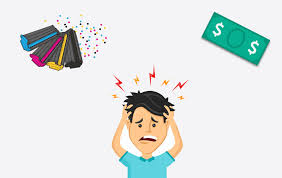
It costs too much.
If your physical activities are expensive, try switching or alternating with
less costly forms of exercise. Walking, jogging, skipping and even swimming in
the community pool are inexpensive.

I don’t have anyone to go with.
First of all, are you really sure that there is no one to keep you company? Try
asking a friend to go walking, jogging, swimming or skating with you. Get a few
friends together and make it a group activity. (A great way to group date!) And
remember that doing some-thing active together is a good way to spend time with
members of the family. A walk can be a good time to talk.
If you can’t find someone to keep you company in an activity, find people who
are already having fun being active. Join a club, sign up for a community
league team, attend a community activity evening, take lessons, participate in
noon hour sports at school; these are all ways to get active with a group of
people who are doing the same thing.
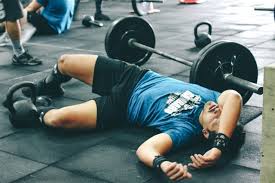
I used to exercise but now...
If you burned out on exercise by overdoing it, find something different to try
at a more relaxed pace.
I don’t want to get sweaty, mess my hair, break my nails, etc. etc. etc.
Keep in mind that physical activity, a good work-out, can make you feel better
and appreciate how good you look. However, there are lots of activities that
will not take
a toll on your appearance (just take a quick look “67 Ways to Get Physical” in
this book). And for some activities, like dancing, you may want to look your
best!
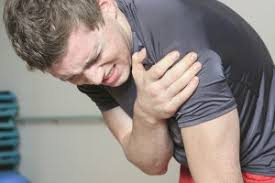
It hurts.
Physical fitness that is good for you should not be painful. Listen to your
body; if something hurts, slow your pace or stop. You should be able to talk
while you are exercising. If you can’t, you are probably pushing yourself
beyond a reasonable healthy level of activity.
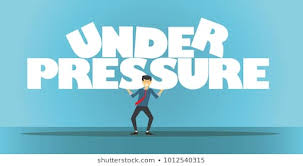
I’m under a lot of pressure right now.
Then now is the time you need some physical activity, perhaps something that is relaxing, to relieve stress and anxiety. During heavy studying and exam times, quick breaks for some exercise can really refresh you.